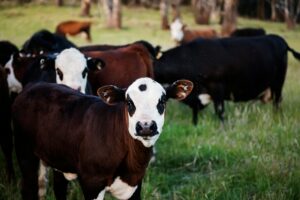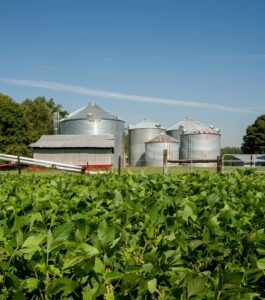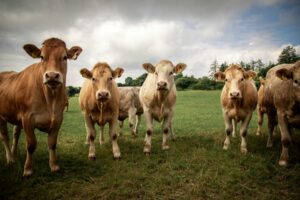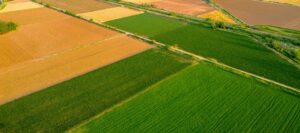Introduction
Chancing across a steenbok on your farm can lead to a sense of mystery and fascination. You feel honoured, a witness to a world that passes unseen by humanity’s schedules and timetables.
The presence of wildlife on farms is not always as discreet or innocent. A while back, the costs of livestock losses to predators were estimated as possibly exceeding R3.2 billion per year (Van Niekerk et al., 2022).
One farmer believes that the situation is out of control. He faces a cunning adversary, an enemy who adapts to his every device! Another farmer selects a combination of the control measures available and believes that losses are limited to acceptable levels. There are many differing theories and beliefs on this topic – and a lot of emotion!
While we look for solutions, let us spare a thought for the many “discreet” wild animals (rabbits, aardvark, bat eared foxes, buck, pangolins) poisoned or maimed inadvertently in a battle that has very little to do with them.
Wildlife-human conflict
The website of the Predation Management South Africa (PMSA) is a first stop for anyone. See www.pmfsa.co.za. The “predator identification” option provides notes on the usual suspects, the black-backed jackal and caracal, and also on leopard, crows, hyena, stray dogs and baboons. For other resources, refer to the “Websites & publications” heading.
- Economic impacts of predation may be relatively small in terms of GDP, but high at the individual farmer scale, with impacts on the rural economy, employment and food security.
- Commercial and communal livestock farmers face similar predation challenges.
- There is no simple solution to managing livestock predation, therefore there is no silver bullet solution.
Source: Kerley, G et al. (eds). 2018. Livestock Predation and its Management in South Africa: A Scientific Assessment.
Predation: control methods
Nor are haphazard measures worth it: animals avoid or escape from poorly set traps and controls and this often make matters worse. Damage causing animals get to know the devices and tricks used by farmers, so after a while even the best trapper may have declining success with a method in a particular area, whilst the same method applied by the same trapper may be highly successful elsewhere.
There are many control methods to choose from with a clear distinction between those which are lethal i.e. they kill animals; and non-lethal i.e. those which control by prevention, protection and aversion. The control equipment should be seen as a toolbox from which the correct tool is selected for the varying applications. Indeed, a combination of methods works best (Viljoen, 2018).
Alpacas
Alpacas have a strong herding instinct and will run an intruder down. Alpacas are 24-hour watch guards and are of particular value around lambing season provided they are introduced 6-8 weeks prior to lambing. Find contacts on the “Speciality fibre production” page.
Anatolian Shepherd Dogs
This method is vouched for by many, but issues relating to Anatolians have been raised. Consult a role player or a farming colleague with experience in working with guarding dogs before taking on a puppy.
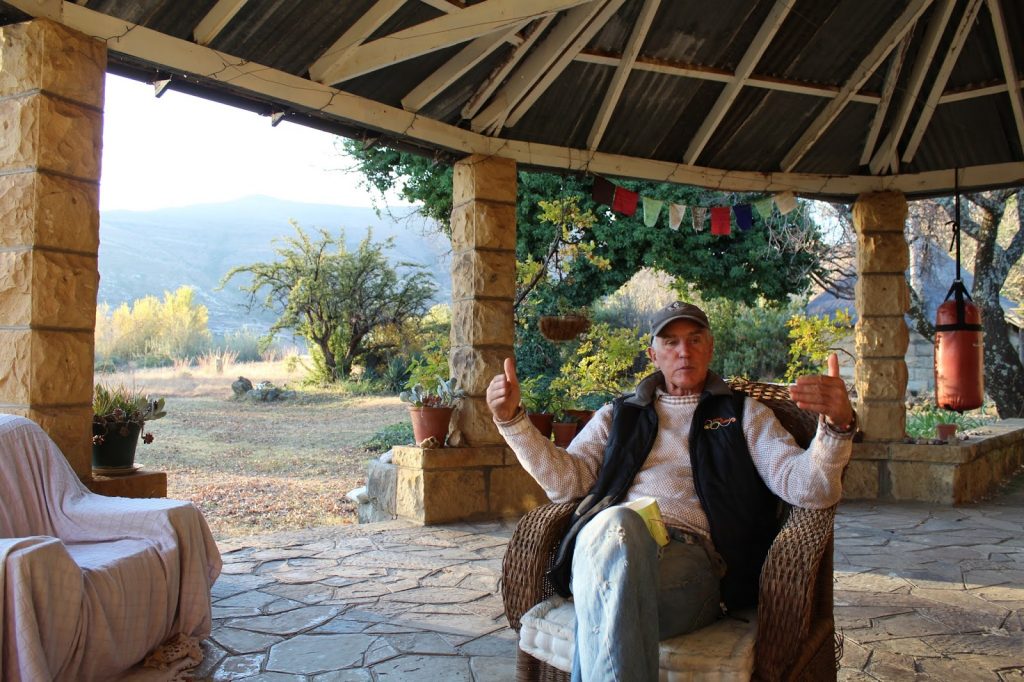
Christian Findlay (above) from Ficksburg has only praise for his Anatolian. See the blog “Rustler’s Valley (part VIII): view from a neighbour“.
Role players include:
- The Cheetah Outreach runs an Anatolian Shepherd programme. Find the notes on www.cheetah.co.za or call 021 851 6850.
- The Ann van Dyk Cheetah Centre www.dewildt.co.za
- Landmark Foundation www.landmarkfoundation.org.za
- Grootfontein Agricultural Development Institute (GADI) https://gadi.dalrrd.gov.za
- The EWT’s Carnivore Conservation Programme (EWT-CCP) www.ewt.org.za
- Namaqua National Park, Elanza van Lente 027 672 1948 elanza.vanlente [at] sanparks.org
Buffer species
Like most suggested “solutions”, this has also been disputed. The idea though is to encourage indigenous prey species like springbok and guinea fowl. Their presence acts as a “buffer” between your livestock and predators, since they are a preferred snack.
Related to this is the caution to interfere as little as possible with the biodiversity on the farm. Interfering in one part has knock-on effects throughout. Removing the largest predator (say leopards), for example, would encourage smaller ones like caracals. If you were to remove all predators, a gradual abundance of rodents would be one result.
Cage traps / Live traps
As a management intervention, lives traps are devices that merely contain animals without causing any major injuries. This is the recommended way of removing any animal from an area. Many leopards, caracals and other species have been captured unharmed using these.
Live traps have been effective tools for research projects. They enable tracking via GPS collars facilitating groundbreaking research into the management of livestock by their owners.
Unfortunately, many animals die of thirst and starvation in these traps since they are not always monitored.
- Landmark Foundation Leopard and Caracal Trap Designs are available from the Landmark Foundation.
- Peter S Predator Control www.peterspredatorcontrol.com
- All trapped animals must not be confined in conditions to cause them unnecessary suffering.
- All trapped animals must not be confined for extended periods without access to food and water.
- Traps must be inspected and cleared at least once daily.
Call and shoot
The advantage is that it is target species specific, and certainly recommended above the more indiscriminate methods like traps and poison. There is no guarantee that you will get the particular individual who has caused the livestock depredation, of course, and innocents like bat-eared fox, aardwolves and others are shot by mistake.
- Find the list of accredited professional hunters at https://pmfsa.co.za. Alternatively, contact the PMSA.
Collars and technology
- Agri-Alert https://agri-alert.co.za Collars and GPS monitoring
- FARM Ranger www.farmranger.co.za Livestock security collars (GPS alarm on your cellphone).
- iSiTech https://isitech.co.za
- Peter Schneekluth www.peterspredatorcontrol.com
- Protect-A-Lamb https://protect-a-lamb.co.za Poisonous (only the attacking predator is affected) and other collars
- e-Shepherd collar www.eshepherd.biz
Denning
This is when the young are removed from dens. A problem here is that removing the young causes the mother animal to come into oestrus again, and she will replace the lost litter shortly.
Donkeys
Donkeys can be very effective at chasing away predators and other intruders. Refer to the “Donkeys” page.
Fencing
By building predator-proof fences, the predators are kept apart from livestock. This works best for an enclosure close to the farm house. Here, fencing is cheaper than potential continued losses. Objections to fencing include:
- an insecure enclosure may allow predator access, which can result in livestock being trapped and more than one animal being killed;
- the maintenance of fencing can be expensive and a constant use of man hours;
- fences interfere with biodiversity. Animals are cut off from food, shelter, breeding partners;
- thousands of innocent animals like tortoises, pangolins and Cape monitors (likkewaans) are electrocuted against the electric fences every year. Fences should be equipped with alarms so that an immediate intervention can be made when the alarm is triggered.
Fencing role players can advise on where fences would be most effective. Find contact details on the “Fencing” page.
A very workable option is the small, movable camps with electric fences, suggested on www.pmfsa.co.za. The PMSA also arranges special prices on galvanised jackal-proof fencing with role players like The Co-op (see www.humkoop.co.za for contact details).
A plan for a Game Proof Predator Fence is also obtainable from Dr Bool Smuts, Tel: 083 324 3344.
Find the article “How to reduce tortoise electrocution mortalities” at www.farmersweekly.co.za.
Flerds
“Flerds” refers to multispecies grazing, and the resulting bonding between sheep and cattle (or other livestock), which deters some predators.
Frightening devices
- Night Eye Protector www.nighteye.co.za Flashing lights which can be attached to horns of livestock or on perimetre poles/fencing
Farmers can work on a combination of their own to frighten and confuse predators away from kraals at night. Possible negatives include predators becoming accustomed to the stimulus (if these devices are used frequently), and attracting thieves.
Herdsman
A diligent and well-trained herder can prove to be invaluable in detecting and preventing potential problems before they take place. This method has the potential to create hundreds (thousands?) of jobs, with great socio-economic benefits.
- Landmark Foundation runs a Shepherding Back Biodiversity Project. Call 083 324 3344 or visit www.landmarkfoundation.org.za
Herd Management
This is touted as the major issue by some role players i.e. that livestock management should be the focus, not predator management.
Livestock/herd management includes lambing co-ordination, using lambing pastures and stock rotation, as well as obvious steps such as avoiding marginal areas where exposure to certain predators is greater e.g. if you are a cattle farmer near the Wilderness, don’t put the cows in the paddocks on the border of the forest during calving season.
In South Africa some aspects of herd management become difficult because of the size of farming operations and a small workforce that has become possible thanks to technology.
Leg-hold devices/gin traps
These are strongly discouraged because of the unacceptably high number of non-target eliminations. This is especially true when traps are not regularly inspected. The PMSA website suggests covering the trap’s jaws with rubber tube so that animals caught are not maimed.
Ostriches
Ostriches have been reported to provide protection (see the “Ostrich” page).
Poison
It is important to note that agricultural poisons may only be used as prescribed on the label. No poisoned bait may be used in South Africa. There is a significant fine – even a jail sentence – for using poisons to kill predators.
When poison targets only the damage causing individual, says Thys de Wet, “we are making tremendous progress”. Sodiummonofluoroacetate may be used selectively to get rid of predators. No other pesticide may be used in toxic collars (see earlier collars heading).
A note on lethal control:
Before using lethal control options legislation should be checked with the local authority regarding possible restrictions which may include or require:
- permit needed
- proof of damage
- proof that non lethal control options have failed
- only qualified professionals used to target problem individuals
- no payment / bounty system – hunters should not be paid per head of jackal killed
- record to be kept by department in authority.
Notes on the legality of all measures can be found on www.pmfsa.co.za.
Warthogs have been included as predators since 2024. They eat new born lambs and damage fences (PMSA, 2024).
International business environment
Human-predator conflict is not unique to South Africa.
- The Africat Foundation, a non-profit organisation based in Namibia – www.africat.org
- Cheetah Conservation Botswana – www.cheetahconservationbotswana.org
- Cheetah Conservation Fund Namibia – https://cheetah.org
- Defenders of Wildlife (USA) – www.defenders.org
- Environmental Investigation Agency (EIA) https://eia-international.org Protecting pangolins
- www.iucn.org – International Union for Conservation of Nature (IUCN). The IUCN Species Programme produces, maintains and manages The IUCN Red List of Threatened Species™. See also www.catsg.org, website of the Cat Specialist Group linked to the IUCN.
- https://predatordefense.org, (US) “helping people and wildlife coexist since 1990”
- PANGOLINS INTERNATIONAL (previously Rare and Endangered Species Trust – REST) in Namibia – www.restnamibia.org
- The Species Survival Network (SSN) co-ordinates the activities of conservation, environmental and animal protection organisations around the world to secure CITES protection for plants and animals affected by international trade. Visit https://ssn.org.
National strategy and government contact
- See Notice 512 of 2016 by the then Department of Environmental Affairs – National Environmental Management: Biodiversity Act, (10/2004): Norms and Standards for the Management of Damage-Causing Animals in South Africa. Find it at www.dffe.gov.za or www.pmg.org.za.
- The “Predation Identification” option at https://pmfsa.co.za includes details of a relevant provincial and/or national authority to contact, for each predator species. The “Compliance by Farmers” option includes provincial and/or national legislation regarding predators.
Department of Forestry, Fisheries and the Environment (DFFE) www.dffe.gov.za
Department of Agriculture www.nda.gov.za
Role players
View the Premium Listings below (scroll down or click on “Premium Listings” on the Table of Contents to the right).
Further reference:
Conservancies and stewardships
- See the “Conservancies and farming” page.
Conservation bodies
- Find details of other conservation bodies on the biodiversity page.
Species-specific programmes
- Black-backed jackal and caracal have a preference for certain natural prey species, like hyrax (dassie), springhare and other rodents that may also cause damage on farms. This service to the livestock farmer (controlling the numbers of these species) falls away, of course, if individual animals develop a taste for livestock.
- Most of the damage in these cases (68%) is caused by the jackal. It is mainly a scavenger, and goes for the smaller lambs or stock up to 30kg. The caracal does not scavenge and may go for livestock heavier than 30 kg, like weaned lambs and even fully grown ewes (Viljoen, 2018).
Black-backed jackal and caracal programmes
- University of the Free State
Cheetah programmes
- The Ann van Dyk Cheetah Centre Mainly active in the Limpopo and North West Provinces, they specialise in cheetahs but also have the expertise to assist with leopard, brown hyena and other smaller predators.
- Cheetah Outreach An organisation in the Western Cape focusing on educating the farming community about predators, it especially highlights the plight of the cheetah and promotes the use of Anatolian shepherd dogs.
- The Endangered Wildlife Trust (EWT) work with cheetahs falls under its Carnivore Conservation Programme.
- Wildlife Act
Leopard programmes
- Landmark Foundation
- The Cape Leopard Trust
- Wildlife Act
Pangolin programmes
- African Pangolin Working Group Currently the Ground Pangolin, found throughout the African continent, and South Africa’s only Pangolin species, is under threat by poaching for bush meat, scale and muthi trade, and as a result of electrocution on electric fences.
Vulture programmes
- Endangered Wildlife Trust (EWT)
- VulPro
Training and research
- The PMSA has developed a framework of minimum standards in training of livestock producers and farm workers on principles of ethical- and best practices in predation management.
- Find research options under “Knowledge Library” at www.pmfsa.co.za.
Websites and publications
Visit the websites mentioned earlier on this page.
- The PMSA has a Predation Management Manual available for download on www.pmfsa.co.za in both English and Afrikaans.
- Predation expert, Niel Viljoen, has a page on the PMSA website. Go to https://pmfsa.co.za/niel-viljoen-programme/.
- Download LANDOWNER’S GUIDE Human-wildlife Conflict: Sensible solutions to living with wildlife (2025) at https://capeleopard.org.za. The publication is also available in Afrikaans.
- The Predation Management Guidelines from the Red Meat Producers Organisation (RPO) can be found here.
- The Best practice reference manual for wool sheep farming in South Africa, brought out by the National Wool Growers Association (NWGA) includes useful notes on predator control. Find the document on www.nwga.co.za or contact 041 365 5030.
- Contact Cape Wools about the DVD on predator management. Call 041 484 4301.
- Information leaflets for farmers about predation and its management are available from the Predation Management Centre website at www.ufs.ac.za.
- Published by the Endangered Wildlife Trust and available in English, Afrikaans and isiZulu, Predators and Farmers describes the various predators, lists benefits and conservation status and indicates their potential impact to farms. Maps, photographs and pictures of spoor make it an attractive read. The reader is made aware of what the law is, and offered alternatives. Download the book from the EWT website at www.ewt.org.za.
- Predators and Associated Wildlife – Livestock, Game farms and Protected Areas – a detailed and photographic analysis of most predators co-habiting farming enterprises is presented. Animal behaviour, killing patterns, feeding patterns, non lethal as well as lethal controls are discussed. This manual is seen as a practical and informative tool to be used by farmers, conservationists and the like. An earlier Predators on Livestock Farms – a Practical Farmers’ Manual for Non-lethal, Holistic, Ecologically Acceptable and Ethical Management can be downloaded at www.landmarkfoundation.org.za/research/.
- Van Niekerk H., Bahta Y. & De Waal H. 2022. “A review and estimation of the financial implications of livestock predation in South Africa”. The South African Archaeological Bulletin 37(1): 1-11. Available at www.researchgate.net/publication/358105322_A_review_and_estimation_of_the_financial_implications_of_livestock_predation_in_South_Africa
- Lorand C, Robert A, Gastineau A, Mihoub JB & Bessa-Gomes C. 2022. Effectiveness of interventions for managing human-large carnivore conflicts worldwide: Scare them off, don’t remove them. Science of the Total Environment, 838, 156195.
- Kerley GIH, Wilson SL & Balfour D. (Eds). 2018. Livestock Predation and its Management in South Africa: a Scientific Assessment. Port Elizabeth: Nelson Mandela University (see note under Nelson Mandela University (NMU), previous heading). Available at https://predsa.mandela.ac.za/Scientific-Assessment-Publication
- McManus JS, Dickman, AJ, Gaynor D, Smuts BH & Macdonald DW. 2015. Dead or alive? Comparing costs and benefits of lethal and non-lethal human–wildlife conflict mitigation on livestock farms. Oryx, 49(4), 687-695.
- Wildlife on farms, specifically predators, is a frequent topic in the agricultural weeklies, Landbouweekblad and Farmer’s Weekly.
- Nattrass N., Conradie, B., Drouilly, M. & O’Riain, M. 2017. “A brief history of predators, sheep farmers and government in the Western Cape, South Africa”. Available at https://humanities.uct.ac.za/cssr/brief-history-predators-sheep-farmers-and-government-western-cape-south-africa
- Publications from CapeNature like Factsheet: Dangerous snakes of South Africa can be found under “Conservation guidelines” at www.conservationatwork.co.za.
- Wildcare: The Story of Karen Trendler and Her African Wildlife Rehabilitation Centre Mike Cadman (International Fund for Animal Welfare) Published by Jacana Media, 2003 ISBN 1919931538, 9781919931531.
Some articles:
- See the blogs “Risk mitigation: the Predator Problem”, “Camera traps reveal the wildlife of the Cape Winelands“, “The little fellow, the pangolin” and “Livestock are threatened by predators – but shepherding may be an effective solution” at www.agribook.co.za/blog.
- Bergh J. 2025, October 29. “Foto in Klein-Karoo: Só lyk ’n luiperdkruip mos . . . [Photo in the Klein Karoo: this is what leopard crawl looks like].” Landbouweekblad. Available at www.landbou.com/nuus/foto-in-klein-karoo-so-lyk-n-luiperdkruip-mos-20251029-0762
- Staff Reporter. 2025, July 10. “CapeNature investigates tragic death of young leopard caught in traps.” IOL. Available at https://iol.co.za/capetimes/news/2025-07-10-capenature-investigates-tragic-death-of-young-leopard-caught-in-traps/
- Gouws A. 2025, February 15. “Greater predator numbers, bigger problems”. Stock Farm. Available at https://agriorbit.com/greater-predator-numbers-bigger-problems/
- Viljoen N. 2024, May 1. “Report Outlines Predation Trends”. RPO. Available at https://rpo.co.za/verslag-werp-meer-lig-op-predasie-neigings-report-outlines-predation-trends/
- Rutta EW. 2023, August 3. “Conflict between humans and wildlife in Tanzania is being poorly managed – and climate change is making things worse”. The Conversation. Available at https://theconversation.com/conflict-between-humans-and-wildlife-in-tanzania-is-being-poorly-managed-and-climate-change-is-making-things-worse-210332
- Chandlay R. 2022, June 14. “OPINION | Human-wildlife conflict rages amid a changing climate”. Mail & Guardian. Available at https://mg.co.za/opinion/2022-06-14-opinion-human-wildlife-conflict-rages-amid-a-changing-climate
- Marais S. 2021, August 31. “Predator control: do your homework”. Farmer’s Weekly, pp. 36-38.
- Van der Walt J. 2020, January 27. “Karoo sheep farmer outwits predators with his nail collar”. Farmer’s Weekly. Available at www.farmersweekly.co.za/animals/sheep-goats/karoo-sheep-farmer-outwits-predators-with-his-nail-collar/
- Birjalal A. 2019, May 22. “WATCH: Two South African filmmakers are on a mission to save pangolins”. IOL. Available at www.iol.co.za/entertainment/tv/watch-two-south-african-filmmakers-are-on-a-mission-to-save-pangolins-23670454
- Steyn T. 2019, January 14. “Roofdiere woon lekker op plase, sê navorser”. Landbouweekblad. Available at www.netwerk24.com/landbou/Bedrywe/Diere/roofdiere-woon-lekker-op-plase-se-navorser-20190114
- Dean S. 2018, July 13. “Help save the African pangolin”. Farmer’s Weekly. Available at www.farmersweekly.co.za/agri-news/africa/help-save-african-pangolin/
Material for this page was merged from many contributors and sources, including PMF newsletters; Tim Snow, Yolan Friedmann and Deon Cilliers; Dr Bool Smuts (Landmark Foundation); Thys de Wet; Prof HO De Waal, African Large Predator Research Unit (ALPRU) and the ALPRU pages at www.ufs.ac.za; Rob Harrison-White (Jackal Connect).


